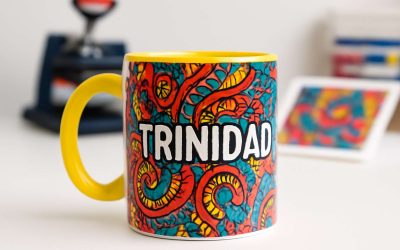
A personalised mug makes a wonderful gift for family, friends, colleagues and clients. It also serves as a promotional item for businesses that wish to stand out from the competition. Mug printing isn’t a complicated process and there are a variety of different methods that can be used to create custom-made mugs. The key is to select a high-quality design and choose the right mug for it. It’s also important to understand how the mug printing method works so that you can make an informed choice about which one is best for your needs.
The first step in mug printing is choosing the right design. This can be anything from a piece of artwork that you drew, to a prized family photo or even your company logo. The design you choose must be able to fit on the mug and it should be something that the recipient will appreciate.
Mug printing is a popular and fun activity that can be done at home with a few simple tools. You’ll need a mug with a polymer coating, a sublimation printer (preferably in A4 format) and special sublimation inks that turn into gas when they react with heat and get integrated into the polymer. Once you have these supplies, you’ll need to follow a few easy steps. To start with, pre-heat your mug press to 400 degrees Fahrenheit. Next, print the design onto a sheet of transfer paper that’s sized for common mug sizes. Make sure the paper is secure and then wrap it around the mug using transfer release tape.
When the mug is ready, place it in the mug press and set it for a medium press time of 150-210 seconds. After the mug has been heated and the transfer is complete, remove it from the press. It’s important to do this quickly and carefully so that you don’t burn yourself.
To finish up, wash the mug in hot water to remove any remaining transfer residue. You can also use a glass cleaner to ensure that the mug looks squeaky clean. Then it’s ready to serve and enjoy!
There are a few other types of mug printing that can be used to make more advanced designs. One is screen printing, which uses a silkscreen to apply a colour to the surface of a mug. This technique is popular for producing a high volume of mugs and can support four or more line colours, making it ideal for displaying fine detail or complex designs.
Another method is digital printing, which involves transferring a colour image to the surface of a mug with a laser or inkjet printer. This method is very popular with ecommerce sites that sell personalised mugs as it can produce high-quality images quickly.
Finally, 3D printing adds a unique look to a mug by adding an embossed effect. This can be achieved with a sand blasting or injection moulding process and it’s often used to give a mug a more distinctive brand or product identity.



0 Comments